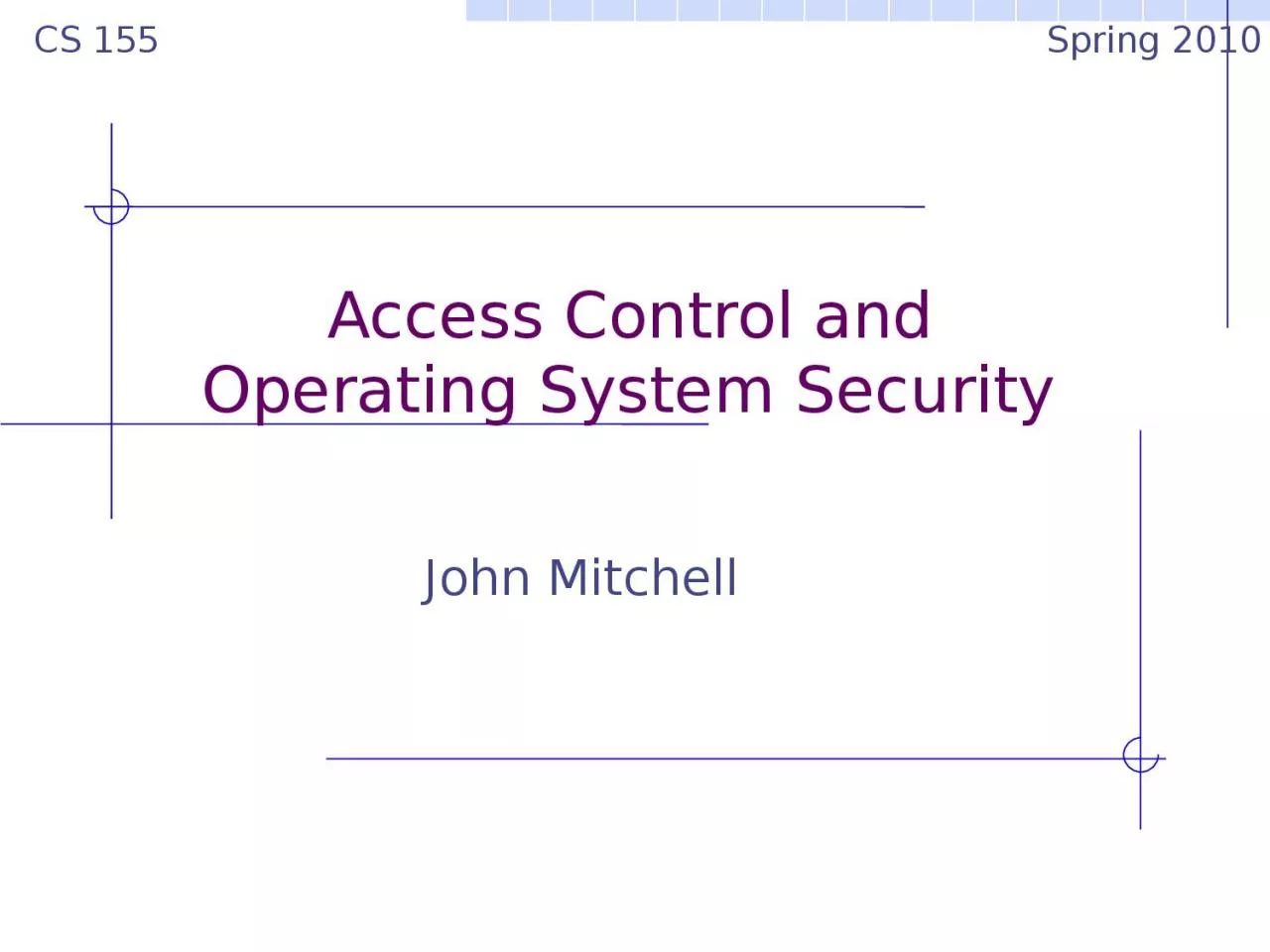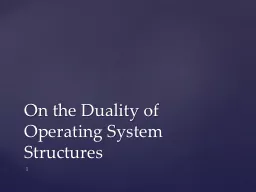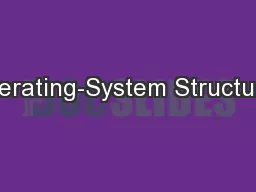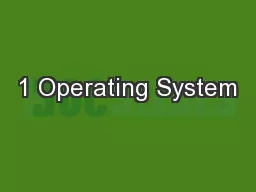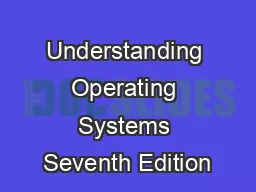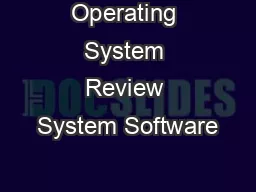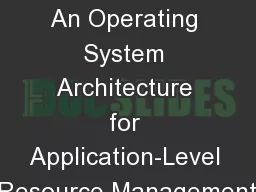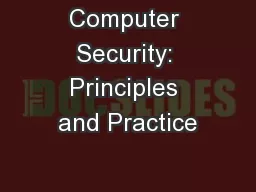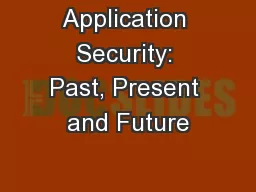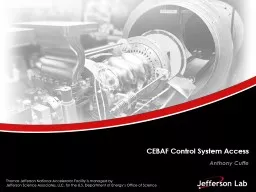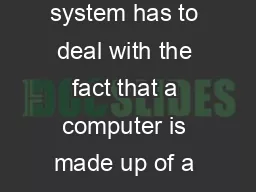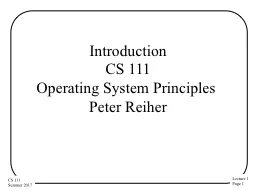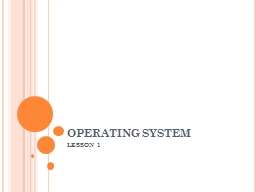PPT-Access Control and Operating System Security
Author : SchoolDaze | Published Date : 2022-08-04
John Mitchell CS 155 Spring 2010 Lecture goal Cover background and concepts used in Android security model IEEE Security and Privacy JanFeb 2009 Outline
Presentation Embed Code
Download Presentation
Download Presentation The PPT/PDF document "Access Control and Operating System Sec..." is the property of its rightful owner. Permission is granted to download and print the materials on this website for personal, non-commercial use only, and to display it on your personal computer provided you do not modify the materials and that you retain all copyright notices contained in the materials. By downloading content from our website, you accept the terms of this agreement.
Access Control and Operating System Security: Transcript
Download Rules Of Document
"Access Control and Operating System Security"The content belongs to its owner. You may download and print it for personal use, without modification, and keep all copyright notices. By downloading, you agree to these terms.
Related Documents

